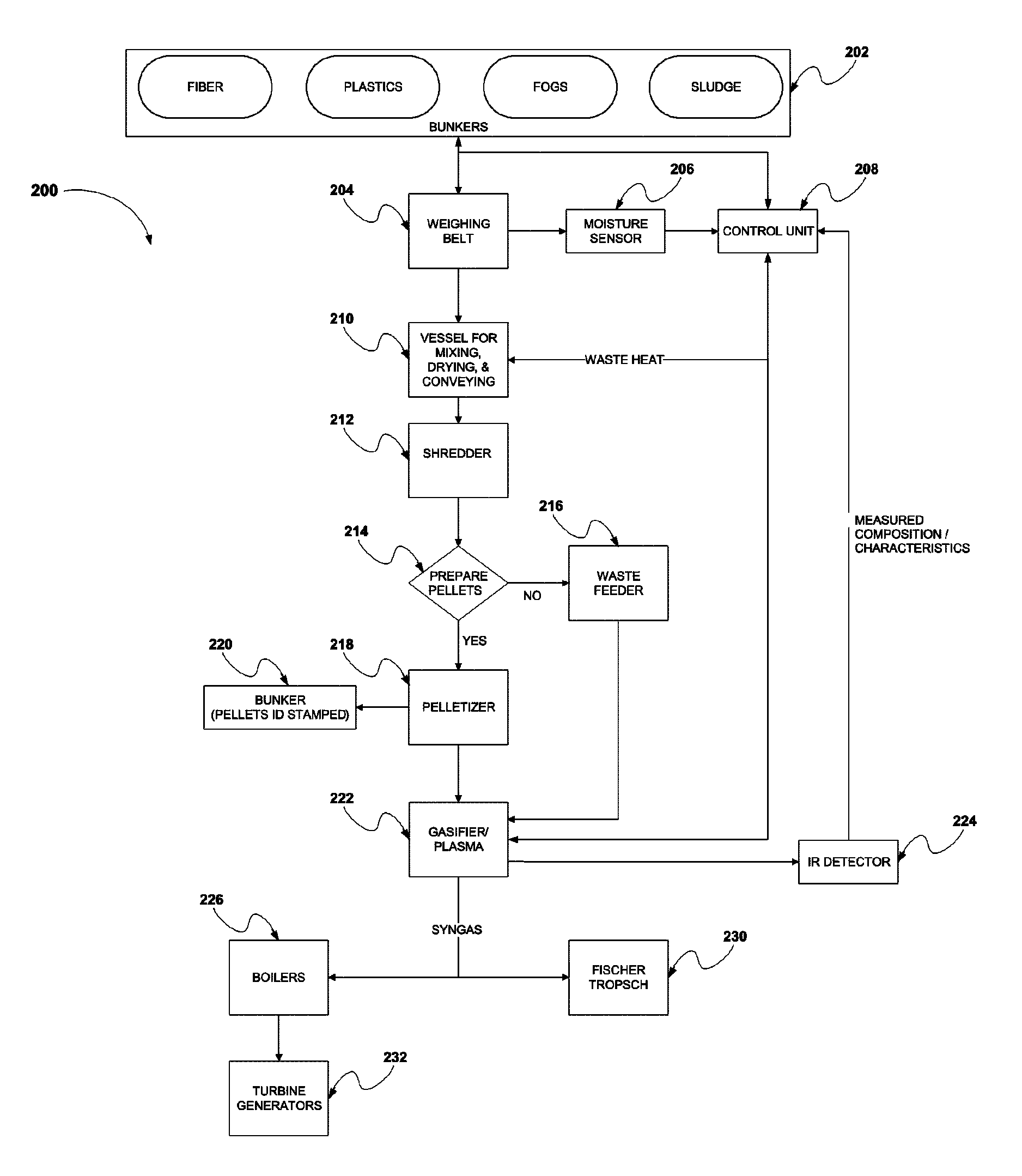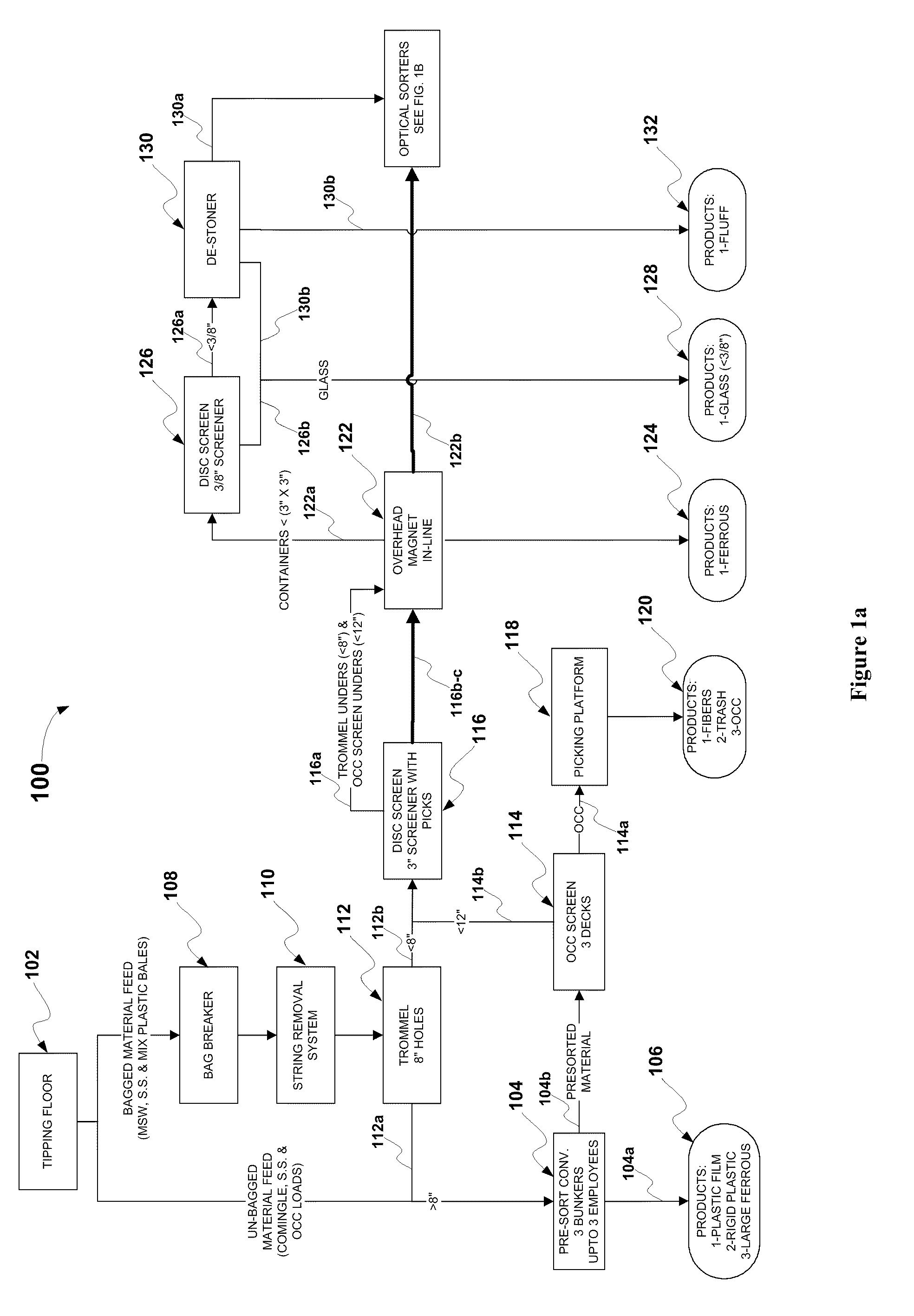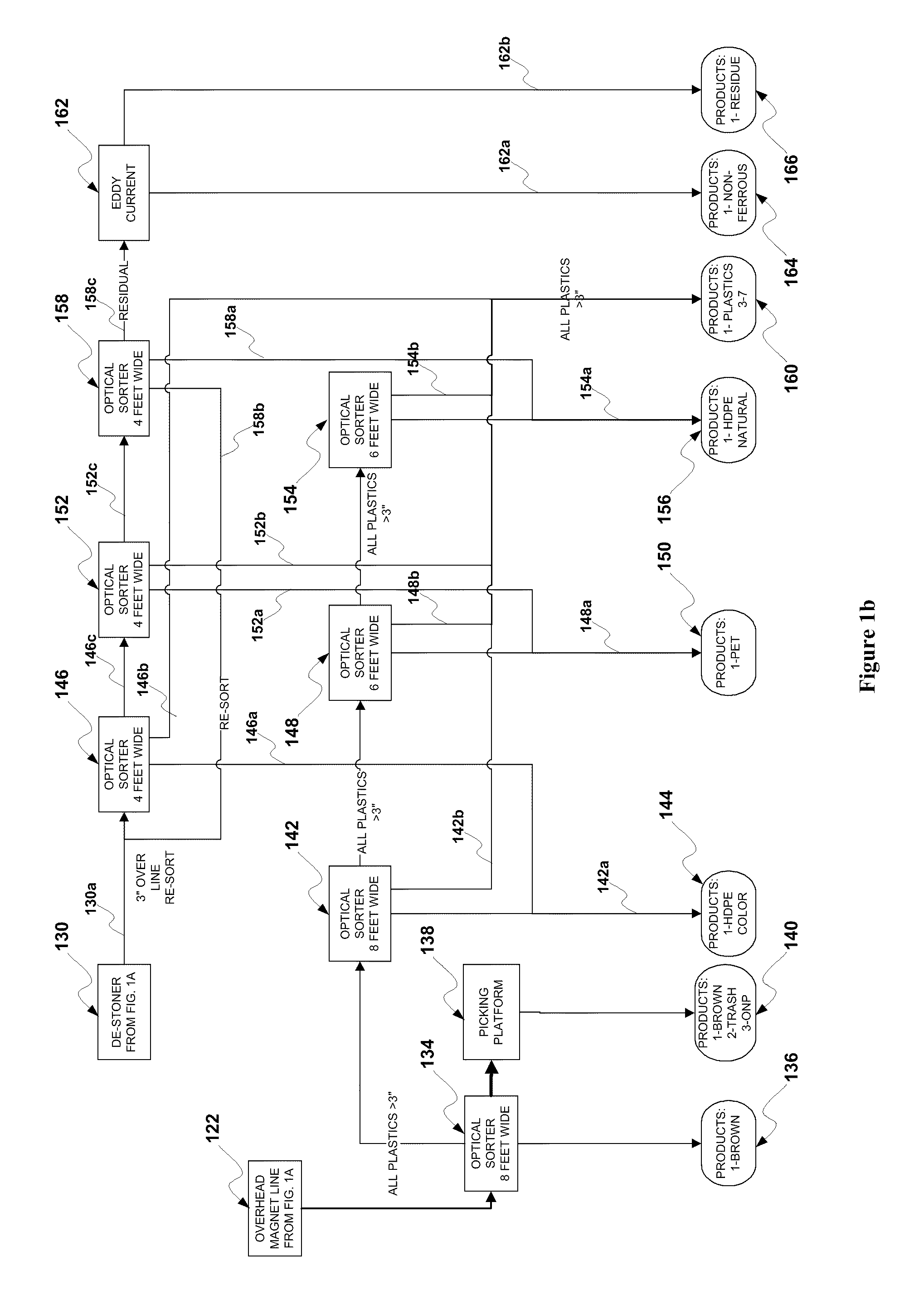System and method for integrated waste storage
a waste storage and waste technology, applied in the field of alternative energy, fuels, petrochemicals, can solve the problems of increasing transportation costs for moving fuel feed stocks for energy and petrochemical production, increasing the amount of pollutants to be generated in the gas given off, and increasing the cost of fuel supply
- Summary
- Abstract
- Description
- Claims
- Application Information
AI Technical Summary
Benefits of technology
Problems solved by technology
Method used
Image
Examples
Embodiment Construction
[0058]Gasification is a thermochemical process that generates a gaseous, fuel rich product. Regardless of how the gasifier is designed, two processes must take place in order to produce a useable fuel gas. In the first stage, pyrolysis releases the volatile components of the fuel at temperatures below 600° C. (1112° F.). The by-product of pyrolysis that is not vaporized, typically called char, consists mainly of fixed carbon and ash. In the second gasification stage, the carbon remaining after pyrolysis is either reacted with steam, hydrogen, air, or pure oxygen. Gasification with air results in a nitrogen-rich, low energy content fuel gas. Gasification with pure oxygen results in a higher quality mixture of carbon monoxide and hydrogen and virtually no nitrogen. Gasification with steam is more commonly called “reforming” and results in a hydrogen and carbon dioxide rich “synthesis” gas (syngas). Typically, the exothermic reaction between carbon and oxygen provides the heat energy r...
PUM
| Property | Measurement | Unit |
|---|---|---|
| temperatures | aaaaa | aaaaa |
| temperature | aaaaa | aaaaa |
| temperature | aaaaa | aaaaa |
Abstract
Description
Claims
Application Information
 Login to View More
Login to View More - R&D
- Intellectual Property
- Life Sciences
- Materials
- Tech Scout
- Unparalleled Data Quality
- Higher Quality Content
- 60% Fewer Hallucinations
Browse by: Latest US Patents, China's latest patents, Technical Efficacy Thesaurus, Application Domain, Technology Topic, Popular Technical Reports.
© 2025 PatSnap. All rights reserved.Legal|Privacy policy|Modern Slavery Act Transparency Statement|Sitemap|About US| Contact US: help@patsnap.com



